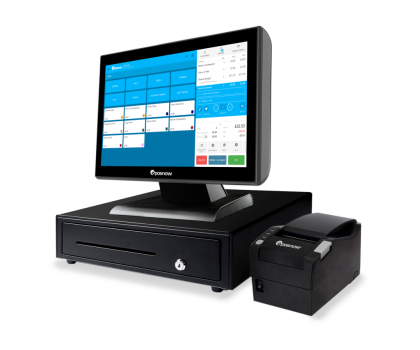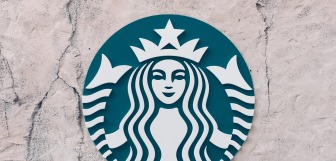Starbucks Location Strategy: Analyzing the Geography of a Coffee Giant
Picture this. You're on your commute to work, and you're thinking about stopping for a quick cup of coffee. Where do you go? If you're like most people, your first thought is probably Starbucks.
That's because Starbucks has become one of the most ubiquitous brands in the world. There are now over 33,833 stores Starbucks locations [1] in more than 80 countries [2]. But how did they get to be so big?
A large part of Starbucks' success can be attributed to its skillful use of location data (and, of course, the delicious Starbucks coffee). By carefully analyzing store data, they've expanded their reach and opened new stores in some of the most strategic locations possible.
So we're taking a closer look at Starbucks' location strategy. We'll explore how they use data to choose new store locations and how that has helped them become the coffee powerhouse they are today.
Let's get started!
Starbucks History
The Starbucks brand is often traced back to 1971 when the first store opened in Seattle's Pike Place Market [3]. Founded by three partners - Jerry Baldwin, Zev Siegel, and Gordon Bowker - Starbucks was originally inspired by a coffee shop in Italy called Il Giornale.
From that humble beginning, Starbucks has grown into a global coffee empire. They now have stores in every corner of the world, from major cities to small towns. No matter where you are, it's likely there's a Starbucks nearby.
How did they manage to achieve such widespread success?
As mentioned earlier, a big part of it is their location strategy. Starbucks has always been very strategic about where they open new stores. With over 30,000 Starbucks locations, they have a lot of data to work with.
Starbucks uses data to their advantage. From analyzing store data and customer behavior to understanding foot traffic patterns, they carefully consider all factors in their location selection. This data-driven approach has helped them become one of the most successful retail chains in the world with an enterprise valuation of $119.56B [4].
What is a location strategy?
In layman's terms, a location strategy is simply a plan for where you want to open new stores. But it's not quite that simple. A good location strategy takes into account various factors, from analyzing store data to understanding demographics.
It's also important to note that a location strategy is not static. As your business grows and changes, your location strategy should also evolve. What works for you today might not work for you tomorrow. For example, if you're a small retail business, you might start by opening a single store in your hometown. But as you expand, you might open additional stores in other cities or countries.
Store Data You Can Analyze
There are a few different types of data you can use to analyze locations:
Demographic data science:
This data type includes population density, age, income, and gender. This data can identify potential target markets and understand customer needs.
Geographic data science:
This type of data includes things like climate, topography, and access to transportation. This data can be used to understand the suitability of a location for a specific business.
Psychographic data science:
This type of data includes things like lifestyle, values, and personality. This data can be used to understand customer behavior and identify potential target markets.
Economic data science:
This data type includes GDP, unemployment rate, and average income. This data can be used to understand the health of an economy and identify potential business opportunities.
Market data science:
This data type includes sales volume, competition, and customer demographics. This data can be used to understand a market and identify potential business opportunities.
Gain all the advantages of a POS system with detailed, flexible, downloadable reports, and so much more:
- Manage and update products quickly with easy-to-use software
- Expand your business into multiple channels and integrate with a variety of online platforms
- Manage multiple locations and salespoints with multi-site management
- Keep queues short with streamlined, modifiable sales processes
- Choose a setup that suits you with software and hardware options

What is Starbucks' location strategy?
Remember, we're only predicting Starbucks' location strategy. However, these are the common elements we predict Starbucks has carried out.
Identifying target markets
Starbucks locations are typically in high-traffic areas with a lot of foot traffic. This could be near a busy subway station or in the middle of a shopping district. Being in these areas makes them more likely to attract customers who are already out and about.
Let's say you're out running errands, and you need to grab a quick cup of coffee. You're more likely to go to a cafe that's close by rather than one that's out of the way. Convenience is key when choosing a coffee shop, and Starbucks knows this. So by being in high-traffic areas, Starbucks can capture customers who are already looking for a place to buy coffee.
Analyzing customer behavior
In addition to understanding foot traffic patterns, Starbucks also looks at customer behavior when choosing new store locations.
This includes looking at data from your customer base like:
-
How often do customers visit a coffee shop?
-
What time of day do they visit?
-
What type of drink do they order?
-
Which of the Starbucks locations are most popular?
By understanding these things, Starbucks can cater to its customers' needs. For example, if they know that many customers visit coffee shops in the morning for a quick cup of coffee before work, they might open a store near one of the busiest subway stations. This way, commuters can easily stop by for their morning coffee fix.
Focusing on growth markets
Starbucks also focuses on opening stores in growth markets. This could be a city experiencing population growth or an up-and-coming neighborhood. By being one of the first coffee shops in these areas, Starbucks can attract new customers and tap into untapped markets.
For example, when Starbucks first came to China in 1999, it only had a handful of stores. But they quickly realized the potential of the Chinese market and began aggressive expansion. They now have over 5,358 stores in China and are continuing to grow [5].
Creating unique store experiences
Another key element of Starbucks' strategy is creating unique store experiences. This could be anything from a beautiful store design to providing comfortable seating and free Wi-Fi.
By creating an inviting and comfortable space, Starbucks can attract customers who want to stay for a while and enjoy their coffee. This is especially important in today's digital world, where people are always connected and looking for places to work or relax.
Building a strong online presence
In addition to its physical stores, Starbucks also has a strong online presence. This includes their mobile app, which allows customers to order and pay for their coffee before they even step into the store.
By having a strong online presence, Starbucks is able to reach more customers and continue to grow its business.
How can you use Starbucks' location strategy?
While you might not be a multi-billion dollar brand with a whole load of data science like Starbucks, you can still use their location strategy for your own further store expansion plan.
Here are a few things you can take from our Starbucks location analyses:
Who are you targeting?
Think about who your target market is and where they're likely to be. For example, if you're targeting busy commuters, you might want to open a store near a busy subway station. Or, if you're targeting mums with young children, you might want to open a store in a neighborhood with many families or near a park.
What type of experience do you want to create?
Think about the type of experience you want to create for your customers. Do you want to create a relaxed and inviting space? Or do you want to focus on convenience and efficiency? By creating a unique store experience, you'll be able to attract customers who are looking for that specific thing.
Let's say you own a bar. You already know that you want to target college students. But you also want to create a unique experience that will appeal to them. So, you decide to open your bar near campus and focus on creating a fun and lively atmosphere through your design and the types of events you host.
What's your online presence like?
In today's digital world, it's important to have a strong online presence. This could be anything from having a website to being active on social media. By building a strong online presence, you'll be able to reach more customers and grow your business.
Suppose you own a small boutique. You might focus on creating a strong Instagram presence and use hashtags to attract potential customers. Or, you might create a blog to share your latest arrivals and style tips. By being active online, you'll be able to reach more people and grow your business.
How using a POS system can help with your location strategy.
A POS system can help you manage your business more effectively and make better decisions about pricing, stock levels, and promotions. It can also help you understand your customer behavior and identify growth opportunities. By using a POS system, you'll be able to gather data about your customers and use it to inform your decisions about things like further store expansion. This can lead to successful business growth.
So, if you're looking to grow your business, a POS system can be a valuable tool to help you make better decisions about things like store locations.
If you'd like to hear more about Epos Now, get in touch with our expert team below.




